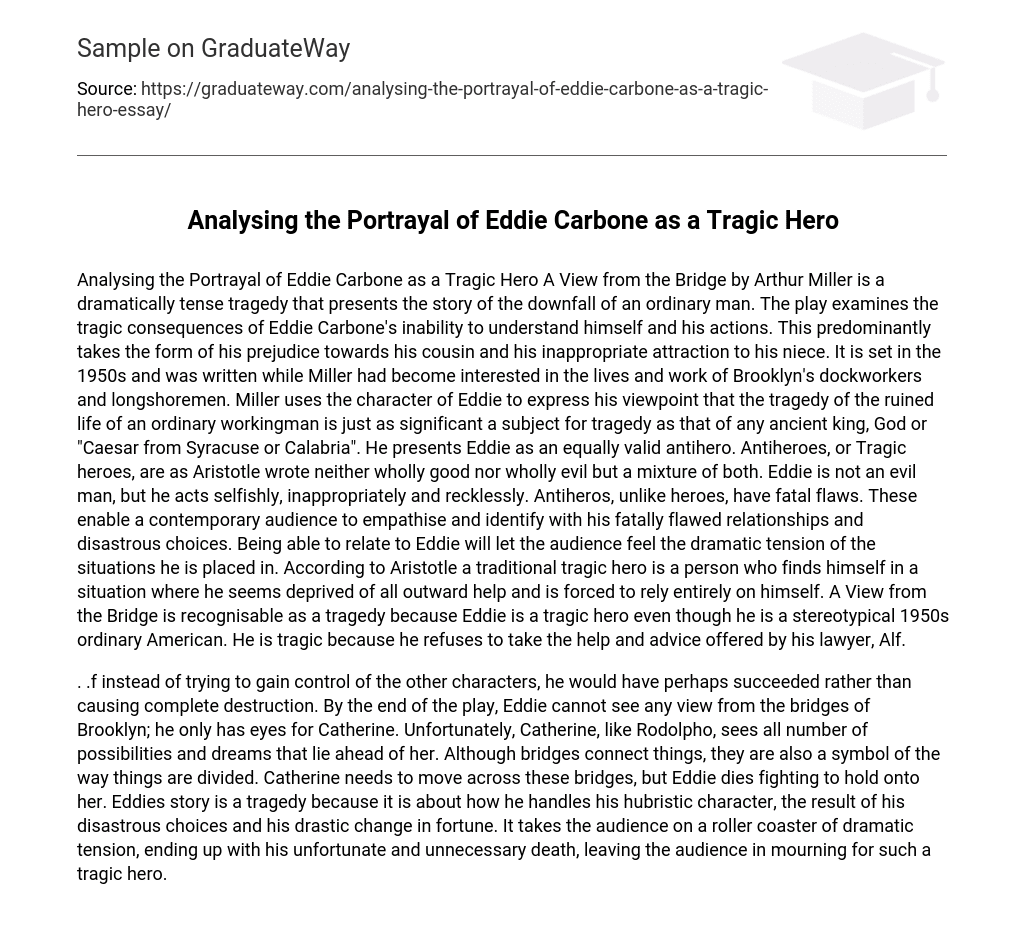Arthur Miller’s play, A View from the Bridge, is a tense tragedy that showcases the destruction of an average individual. The story delves into the tragic aftermath caused by Eddie Carbone’s lack of self-awareness and poor decision-making. This is primarily portrayed through his discrimination against his cousin and his inappropriate infatuation with his niece. The play is set in the 1950s and was written during a period when Miller became fascinated by the lives and labor of Brooklyn’s dockworkers and longshoremen.
Miller’s portrayal of Eddie as an antihero conveys his belief that the tragedy of a common workingman’s ruined life is just as significant as that of any ancient king or deity. Eddie is presented as a legitimate antihero, who according to Aristotle, embodies a mix of both good and evil qualities. While not inherently evil, Eddie demonstrates selfish, inappropriate, and reckless behavior. Unlike traditional heroes, antiheroes possess fatal flaws. These flaws allow modern audiences to empathize with Eddie’s imperfect relationships and disastrous choices. By relating to Eddie, the audience can experience the dramatic tension of the situations he finds himself in.
According to Aristotle, a traditional tragic hero is an individual who finds themselves in a situation where they appear to be devoid of any external assistance and are compelled to rely solely on themselves. A View from the Bridge can be identified as a tragedy due to Eddie, who serves as a tragic hero despite embodying the typical 1950s average American. He is tragic because he rejects the aid and counsel provided by his lawyer, Alf – instead of endeavoring to establish dominance over the other characters, he would likely have succeeded rather than causing utter devastation. At the conclusion of the play, Eddie can no longer perceive any view from the bridges of Brooklyn; his attention is solely directed towards Catherine.
Regrettably, Catherine and Rodolpho both envision numerous possibilities and aspirations for the future. While bridges serve as a means of connection, they also symbolize division. Catherine must traverse these bridges, but Eddie tragically perishes while desperately clinging to her. Eddie’s tale is a tragedy that revolves around his arrogance and the consequences of his catastrophic decisions and dramatic downfall. This narrative takes the audience on a tumultuous journey of suspense, concluding with Eddie’s untimely and unnecessary demise, causing the audience to mourn the loss of such a tragic hero.





